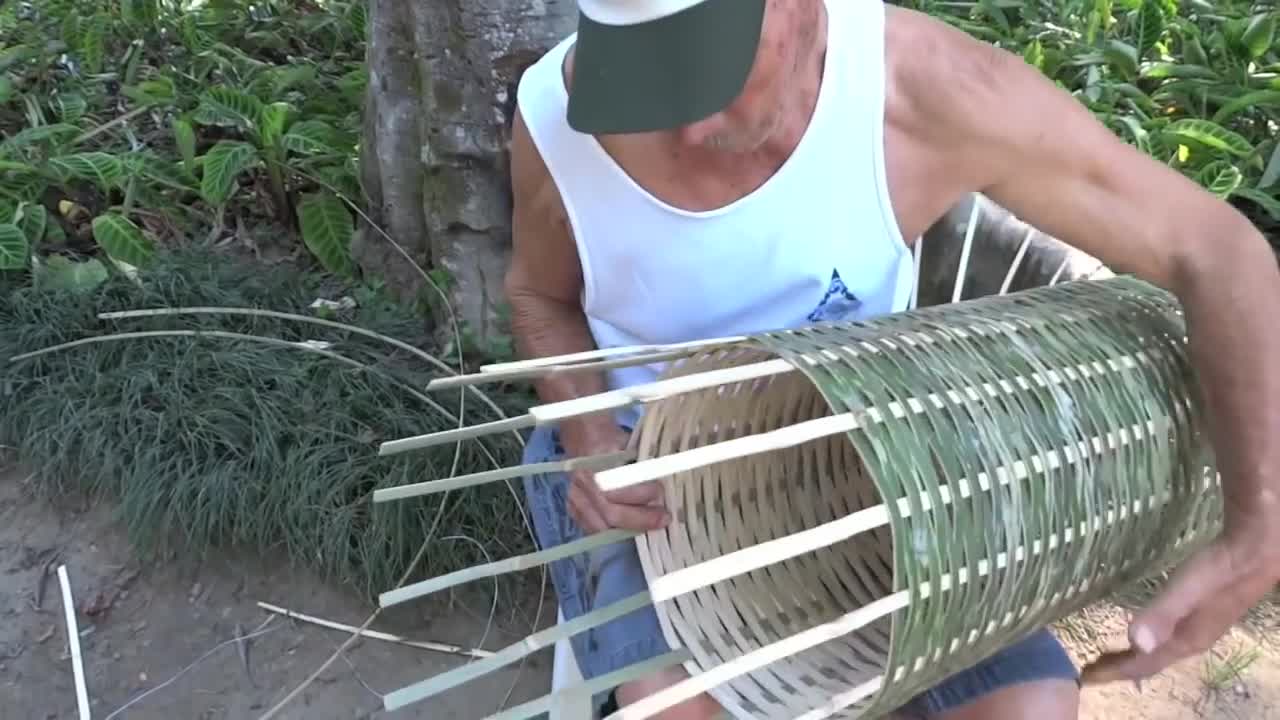Premium Only Content

ARTISANAL FUNNEL FISH-TRAP - ENGLISH SUBTITLES
ARTISANAL FUNNEL FISH-TRAP - ENGLISH SUBTITLE.........................................................................................
Passive fish traps are among some of the oldest documented relics from indigenous cultures all over the globe. Stone weirs built many hundred years ago in rivers and low tide areas still exist today.
Funneling fish for easier capture was a strategy used to put food on the table in almost every primitive culture. While different trap designs exist, there is one design that seems to be universal – the woven funnel trap.
Whether made from bamboo in the wetlands of Asia and South America, reeds on the coast of New Zealand or grapevine in the forests North America the funnel basket trap varied only slightly in design across multiple continents and cultures.
There are essentially two parts to the funnel basket trap: the body and the inverted cone cap. Lured by the scent of bait, the fish enter the main trap body through the inverted cone shaped cap. Once inside they aren’t smart enough to figure out how to get back out.
http://willowhavenoutdoor.com/feature...
The trap depicted on the video, called "covo de pesca" in the southeast of Brazil, is no longer used nowadays by seu Miguel Buta. He said he learned the craft from his father when he was a child and stopped using it recently because, after him, the bait of bread or sardines is very expensive.
Seu Miguel Buta lives on the banks of the Paraíba do Sul river since his birth. His abode, as well as part of his family's abodes is in the outskirts of the very industrialized town of São José dos Campos, in the southwest of Brazil. Some of his sons still fish, bat not to make money, just for leisure. Instead, Seu Miguel still delivers his production in the local market every saturday.
-
 LIVE
LIVE
I_Came_With_Fire_Podcast
9 hours agoRESTRUCTURING THE WORLD- CIVICS CLASS WITH DAN HOLLAWAY
374 watching -
 DVR
DVR
Bannons War Room
2 months agoWarRoom Live
14.2M3.56K -
 LIVE
LIVE
Total Horse Channel
1 day agoYELLOWSTONE SLIDE I | SATURDAY
392 watching -
 23:52
23:52
The Rad Factory
3 hours ago $0.67 earnedIs My Formula Race Car Faster Than a Go Kart?
7.06K1 -
 20:56
20:56
marcushouse
2 hours ago $1.12 earnedStarship Flight Test 9 Vehicles FINALLY Prepare, and Huge Starbase Upgrades – It's All Happening!
11.3K8 -
 23:48
23:48
CatfishedOnline
16 hours agoVictim's Life is Threatened After He Gets in Too Deep With a Crypto Scammer
8.37K2 -
 8:40
8:40
Shea Whitney
3 hours ago $0.74 earned12 Fashion Mistakes Making You Look OLD & OUTDATED!
10.9K2 -
 29:18
29:18
TampaAerialMedia
5 hours ago $0.24 earnedUpdate SARASOTA, FL 2025 - St Armands, Lido, & Longboat Key
7.22K1 -
 15:52
15:52
ARFCOM Reviews
21 hours ago $0.42 earnedNew Entry Level RDS | Primary Arms MD 21 GLx/SLx
9.24K3 -
 44:55
44:55
BEK TV
18 hours agoUNDENIABLE PROOF: CHEMTRAILS, CHEMICAL FOG & USAID EXPOSED—THEY'RE POISONING US FROM ABOVE!
7.61K2